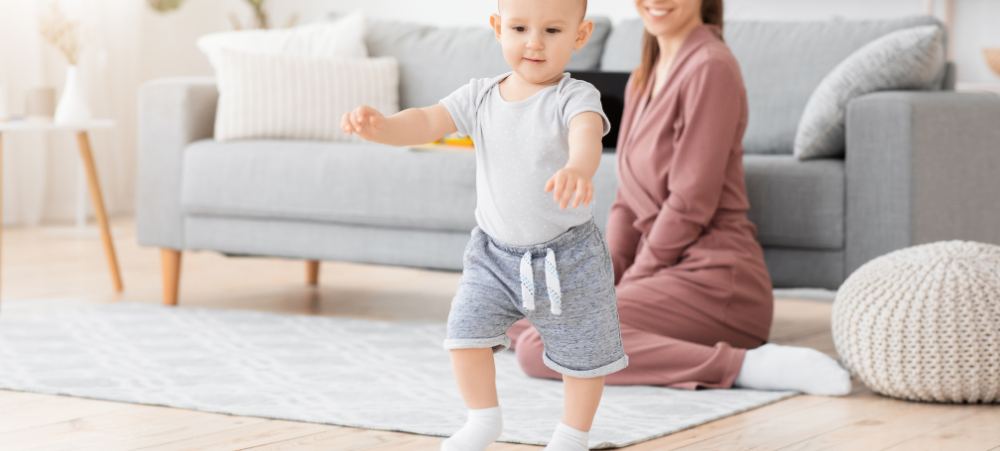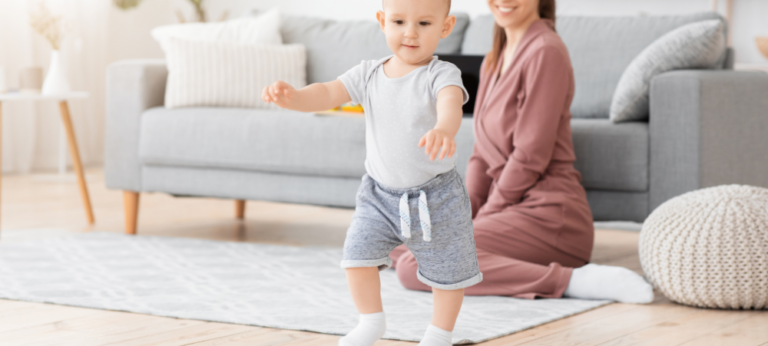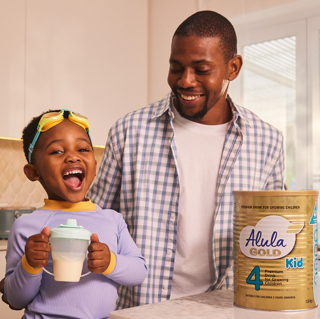When we talk about your baby’s mobility, what ideas come to your mind? Things like, rolling, crawling, walking, etc.
All of these things involve the large or gross muscles in the body & so to encourage mobility, we do exercises that strengthen your baby’s body from quite an early age. Now, it’s a bit like doing some strength training at gym – on the first visit, you’re not going to go for the heaviest weights, otherwise, you can cause some injury. You’re fist going to do the basics first & build on top of that.
It’s the same with your baby. We’re going to talk about each stage & what’s appropriate for each stage. The reason why I will talk about stages & give approximate ages is for 2 reasons:
- Premature babies’ chronological age (i.e. number of weeks & months of age) is different to their developmental age, because they had less time to develop physically in the womb.
- Each child is different in terms of their development & this is still healthy.
Control over the body
From birth onwards, your baby will develop physically by first learning to control his / her head, slowly growing stronger down the trunk of the body & the legs. That’s why you’ll see that your baby will first learn to control his / her arms & only later his / her legs.
Babies also gain control of their bodies from the centre outwards, which is why your baby will first learn to bat or try to swipe a toy & only later discover that he / she can move & control his / her fingers independently.
Here, we do exercises to strengthen baby’s neck, shoulder & back muscles, for example, lying baby on his / her tummy. Often babies do not enjoy the experience when you first start placing them on their tummies, but with practice & stronger neck & shoulder muscles, they will enjoy the tummy time. When you do place baby on his / her tummy to begin with, you can roll a small blanket & place it under baby’s chest, but with his / her arms in front of it, so that your baby is not completely flat on his / her tummy.
Remember:
- Not to place baby on his / her tummy just after a feed, because the pressure on the tummy could cause the milk to reflux out
- Only to place baby on his / her tummy when she / he is happy
- Even a minute or two to begin with will help to build his / her muscles & you can gradually increase the time as your baby’s muscles become stronger
We do quite a few different tummy exercises in my workshop, but one example for a nearly 4 month old baby is:
- For mom to lie on her back & hold her baby so that baby & mom’s tummies are touching
- Mom asks “Where’s my baby?” & lifts baby’s face to her face and says “There you are!”
- Repeat
- Mom asks “where’s my baby?” & lifts baby up high above her face & says “Up high, high, high!”
This also helps stimulate your baby’s vestibular system – so he / she can feel movement & his / her body’s position in space & it gives moms a good work out for tummy muscles too!
Learning to roll
As your baby becomes stronger & stronger at moving & controlling his head, he / she will start to turn his / her head around to see interesting things & his / her legs will start to follow the head. This ability to twist at the waist is important in order to learn how to roll, sit & crawl. Between the age of 4 & 6 months, your baby will start to roll from tummy onto his / her back & also from back on to tummy.
An exercise that I do in my workshop to encourage rolling is to:
- Hold both of your baby’s hands together in one hand & both baby’s feet together in your other hand.
- Gently rock your baby from side to side
- Can later just hold the feet together & gently roll your baby over
Learning to sit
At around the age of 6 months, your baby will learn to sit. They key to sitting is for your baby to learn how to balance his / her body & your baby will have a few crash dives before he / she masters balancing for sitting. So it’s important to make sure that your baby is well supported by things like cushions & is under supervision preferably on a softer surface e.g. a soft carpet / rug vs a hard, tiled floor.
Some ways to support your baby while learning to sit are:
- Put your baby in the Tailor pose – feet together & knees open & carrying his / her weight on her hands
- You can place pillows all around your baby or you can sit with your baby between your bent legs either facing you or facing away from you
Again there are many different exercises that we do in my workshops to encourage balance. One really fun one that we do for 5 month old babies & which even older toddlers will love is using a towel.
- Here we simply place baby on his / her tummy on a towel & drag the towel around the room.
- It’s important that your baby faces you, because he / she may feel a little anxious about this game the first time & will look for the expression on your face for reassurance.
Learning to Crawl
If your baby has spent lots of time on his / her tummy, once he / she has learnt how to sit, he / she will first learn to pull themselves forward from the sitting position to all fours. Once comfortable on all fours, your baby may start rocking on all fours and later crawling backwards. Soon thereafter your baby will learn to crawl forwards.
Now is the time to hold back on tendency to quickly solve your baby’s problems & let your baby’s curiosity in the world encourage his / her mobility. So in this stage, if your baby has knocked a toy out of grasp, encourage your baby to try to stretch & move towards the toy.
This stage is an excellent example of how babies learn through frustration, but as mothers, we need to watch & manage the level of frustration. For example, if your baby is tired & becomes frustrated, there will only be a very short window of opportunity for your baby to be happily frustrated & if your baby is frustrated for too long, he / she will soon become inconsolable.
Some ways to encourage your baby to crawl are to:
- Provide your baby with interesting toys that can roll or move away from your baby’s grasp e.g. balls, toys which have safe wheels
- Place your baby over 1 thigh with his / her arms in front & legs to the back in an all fours position & gently rock your baby from front to back.
Learning to Walk
Walking usually starts between the ages of 12 – 15 months, although some babies start earlier (e.g. 10 months).
Already before your baby learns to crawl, you can help to prepare him / her for walking by preparing the body for bearing weight.
Here some examples are:
- For a 3 month old baby, clap the soles of your baby’s feet together to prepare the feet for carrying weight.
- For a 5 month old baby, gently bounce him / her on your lap to get him / her used to the feeling of carrying his / her own weight.
As your baby becomes older & stronger, you can help your baby learn to stand, by holding him / her in a standing position & practice stepping. We usually do this from around 9 months, but some babies like to do this before they start sitting. Babies, who like to stand before they can sit, can be more likely to have hip inflexibility & therefore it is very important to perform hip massages for them to keep their hips flexible.
Once your toddler already knows how to walk, here are some fun ways to further stimulate their movement:
- For toddlers that already know how to walk, show your child how to jump (from about 2 years of age).
- For toddlers that have learnt how to jump, show your child how to hop on one foot.
Jumping & hoping teach our children balance and how they can move their bodies in different ways.
To Summarise:
We can strengthen & prepare our babies’ bodies for mobility by:
- Placing them on their tummies to strengthen the neck & shoulder muscles for head control.
- Encourage them to turn their heads & twist at the waist for rolling.
- Support & practise balance for sitting.
- Encourage babies to try to reach toys just out of their grasp on their own by crawling.
- Practise weight bearing, standing & stepping for walking.
And then after your baby become mobile, your routine as a family changes again. You’ll start to find your baby’s toys inside things like your video machine, your home will have toys all over the show & you won’t be able to take your baby with you to restaurants that don’t cater for children. And that’s when The Spur moves up towards the top of your list of places to eat out at…
















Thanks so much for sharing all these important in4 on how we should raise our kids it really means a lot God bless god it helped a lot . Much <3
Thanks so much for sharing all these important in4 on how we should raise our kids it really means a lot God bless god it helped a lot . Much <3
Thank you for the exercises